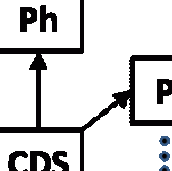 West-African countries have been under attack by drug counterfeiting criminals for decades with little resistance until the last one. The result, in 2002 Mohammed Yaro Budah, then president of the Pharmaceutical Society of Nigeria, estimated that 70% of the drugs in Nigeria were fake or substandard. That’s an incredible figure, but starting around that time the Nigerian National Agency for Food and Drug Administration and Control (NAFDAC) under the direction of Professor Dora Akunyili began fighting back.
West-African countries have been under attack by drug counterfeiting criminals for decades with little resistance until the last one. The result, in 2002 Mohammed Yaro Budah, then president of the Pharmaceutical Society of Nigeria, estimated that 70% of the drugs in Nigeria were fake or substandard. That’s an incredible figure, but starting around that time the Nigerian National Agency for Food and Drug Administration and Control (NAFDAC) under the direction of Professor Dora Akunyili began fighting back.
Initially they focused on inspecting drug imports at the Nigerian ports and airports and they were able to bring the percentage of fake or substandard drugs to come down considerably. More recently they have begun employing a number of Raman Spectroscopy-based devices called TruScan (recently acquired by Thermo Scientific) to inspect drugs and anti-viral medicines being sold in pharmacies during “unscheduled” visits.
Even more recently, a number of pharma manufacturers have begun to add low cost scratch-off stickers to the drugs sold in Nigeria that cover a random number that can be scratched off and checked for authenticity by patients and healthcare professionals using SMS text message-based technology from Sproxil. The service was launched in 2010 on a single product but that number is growing quickly as a number of large U.S.-based drug companies add the scratch-off stickers to their products. The service is sponsored by NAFDAC.
WOULD THESE TECHNOLOGIES WORK IN THE U.S.?
That is, would these technologies help to reduce the number of illegitimate drugs in the U.S. supply chain? I believe that the answer is Continue reading Illegitimate Drugs In The U.S. Supply Chain: Needle In A Haystack






 Digital electronic messages can be transmitted from one party to another using a wide range of communications technologies. Today, businesses that make use of the internet to transmit their business messages to and from their trading partners make use of standards-based
Digital electronic messages can be transmitted from one party to another using a wide range of communications technologies. Today, businesses that make use of the internet to transmit their business messages to and from their trading partners make use of standards-based 